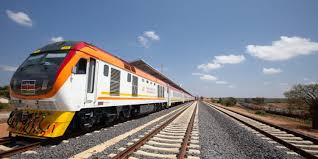Kenya’s Standard Gauge Railway (SGR), one of East Africa’s major transport investments, is seeing a major shift in usage. While passenger numbers have continued to fall for the third year in a row, freight services on the railway have reached record highs in 2025.
Between January and March 2025, only 529,591 passengers travelled on the SGR. This represents a continued drop in the number of users compared to previous years. Transport analysts in Nairobi say this decline is linked to rising ticket prices, which have discouraged many ordinary Kenyans from using the service. The SGR had earlier been celebrated as a faster and safer alternative to road travel between Mombasa and Nairobi.
Reports from Kenya’s source indicate that the trend of low passenger traffic is now putting more financial pressure on the government, especially because public funds are used to repay the massive loans taken to build the railway line.
In the first half of 2024, passenger figures were already down by over 120,000, a nearly 10 percent drop compared to the same period in the previous year. The situation has not improved in early 2025.
However, the story is different when it comes to freight operations. cargo volumes transported via the SGR rose sharply and reached a 13-month high in March 2025. This jump in freight traffic is being viewed as a major win for the Kenya Railways Corporation and its Chinese operating partner, Africa Star Railway Operations Company (Afristar).
The increase in goods movement shows that the railway is still playing a key role in East Africa’s trade corridor. It also confirms that SGR has greater potential as a cargo carrier than as a passenger service, especially with the volume of imports and exports between Mombasa Port and inland markets such as Nairobi and Naivasha.
Sources close to the operators say improvements in infrastructure and better handling facilities have boosted cargo capacity. Many logistics firms and manufacturers are now shifting to rail to avoid the delays and damage often associated with road transport.
But the drop in passenger numbers raises big questions about the long-term sustainability of the railway’s dual model. With fewer passengers using the service each year, it is becoming harder for Kenya to justify the current fare rates and continued reliance on taxpayer subsidies. This situation is also creating concern among economists who worry about how Kenya will repay the loans from China’s Exim Bank, which were used to fund the multi-billion-dollar project.
Policy experts are now advising Kenya’s Ministry of Transport to consider reviewing the current pricing model for SGR passenger tickets. One suggestion is to introduce flexible pricing that targets low-income earners and peak travel times. Others recommend more investment in transport links between SGR stations and nearby towns and cities, to make it easier for commuters to connect with the train.
Despite the challenges, the freight success gives room for hope. A strong cargo sector can provide steady revenue to offset losses from the passenger side and ease pressure on the national budget. The key, observers say, is to find the right balance between transporting people and moving goods.
For Nigeria, this development provides important lessons. As Nigeria continues to expand its own railway infrastructure through projects like the Lagos-Ibadan railway and the Kano-Maradi line, policymakers should prioritise cargo as a key source of revenue. At the same time, ticket pricing must be managed in a way that supports widespread use by average Nigerians.
With proper planning, Nigeria can avoid some of the pitfalls Kenya is facing and build a sustainable rail system that serves both economic and social needs.
